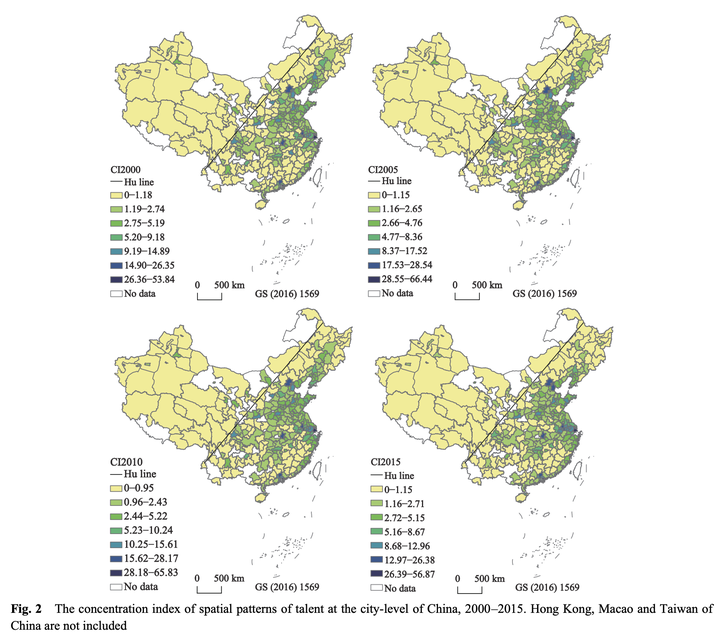Geography of Talent in China During 2000–2015. An Eigenvector Spatial Filtering Negative Binomial Approach

Abstract
The increase in China’s skilled labor force has drawn much attention from policymakers, national and international firms and media. Understanding how educated talent locates and re-locates across the country can guide future policy discussions of equality, firm localization and service allocation. Prior studies have tended to adopt a static cross-national approach providing valuable insights into the relative importance of economic and amenity differentials driving the distribution of talent in China. Yet, few adopt longitudinal ana- lysis to examine the temporal dynamics in the stregnth of existing associations. Recently released official statistical data now enables space-time analysis of the geographic distribution of talent and its determinants in China. Using four-year city-level data from national population censuses and 1% population sample surveys conducted every five years between 2000 and 2015, we examine the spatial pat- terns of talent across Chinese cities and their underpinning drivers evolve over time. Results reveal that the spatial distribution of talent in China is persistently unequal and spatially concentrated between 2000 and 2015. It also shows gradually strengthened and signific- antly positive spatial autocorrelation in the distribution of talent. An eigenvector spatial filtering negative binomial panel is employed to model the spatial determinants of talent distribution. Results indicate the influences of both economic opportunities and urban amenities, particularly urban public services and greening rate, on the distribution of talent. These results highlight that urban economic- and amenity-related factors have simultaneously driven China’s talent’s settlement patterns over the first fifteen years of the 21st century.